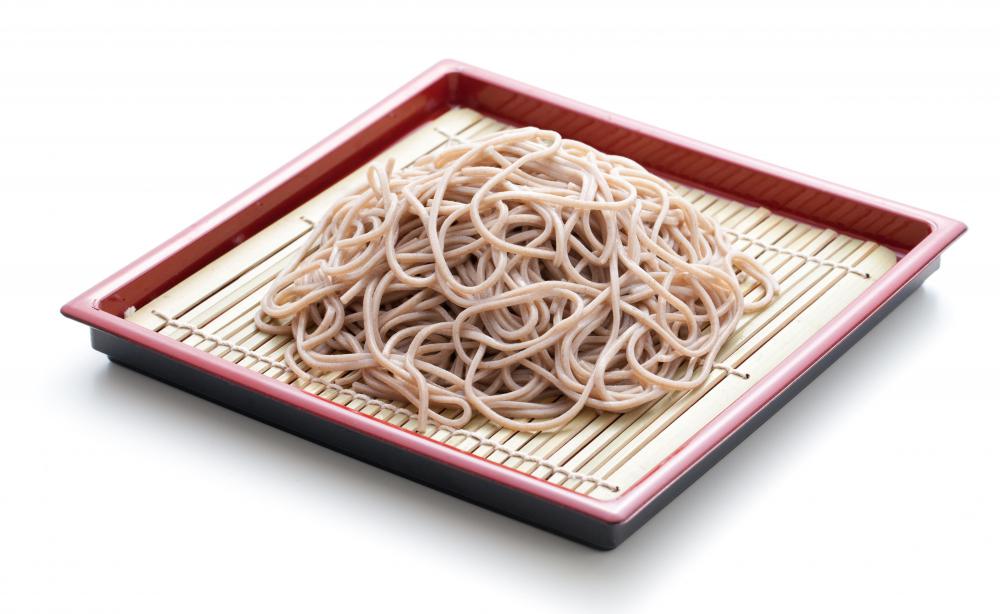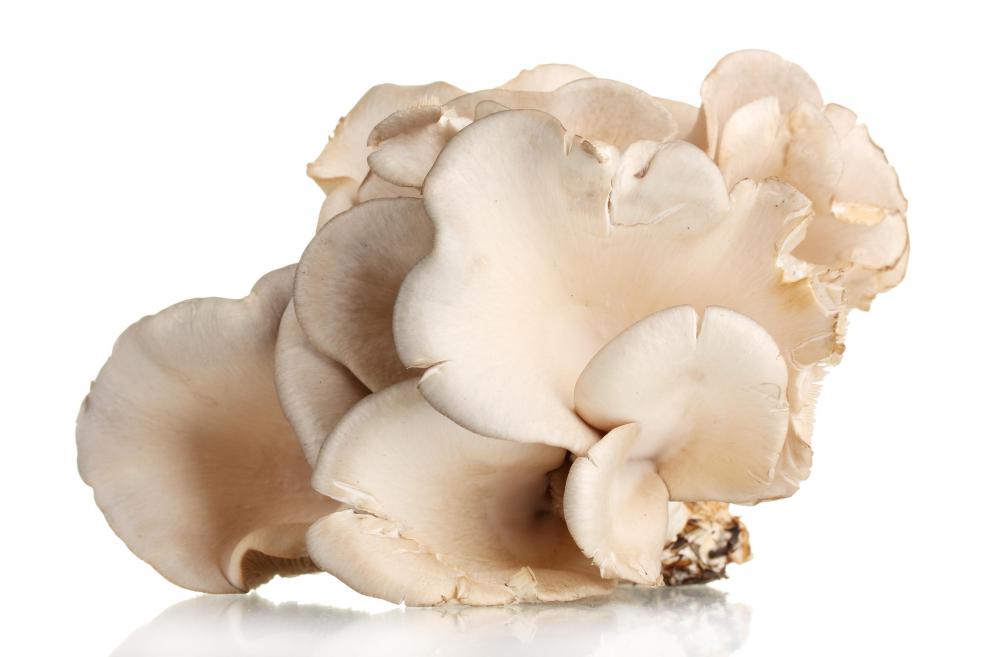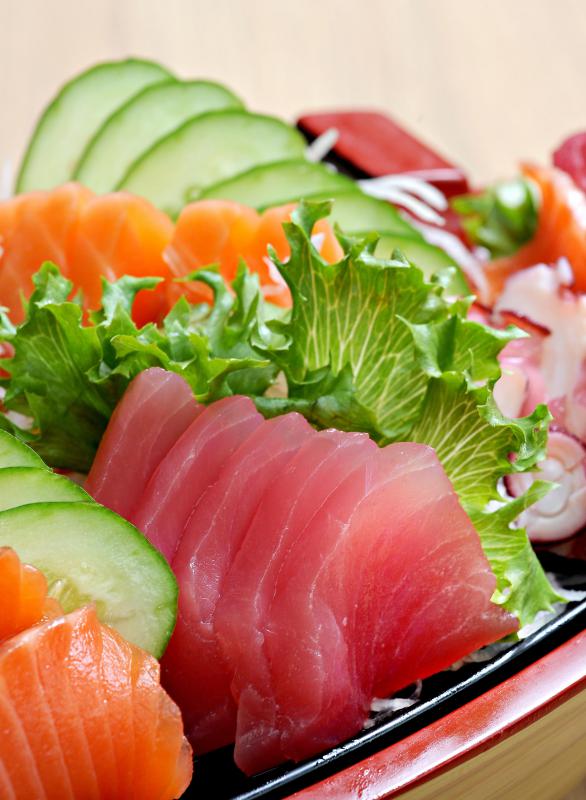At WiseGEEK, we're committed to delivering accurate, trustworthy information. Our expert-authored content is rigorously fact-checked and sourced from credible authorities. Discover how we uphold the highest standards in providing you with reliable knowledge.
What is the Japanese Diet?
The traditional Japanese diet is associated with a longer life and low obesity rates. Its protein sources center around fish and tofu, rather than meats. Tofu is bean curd formed into a soft, almost rubbery-textured, white block. High in protein yet low in fat, tofu can be served in many different dishes. Although fish eaten in the Japanese diet is usually of the fattier type, such as salmon, it's extremely nutritious as it's high in heart healthy omega-3 fatty acids.
Lots of fresh vegetables and fruits are eaten daily in the Japanese diet. Fresh produce provides many vitamins and minerals, and contributes to good overall health. In addition to land-grown vegetables such as spinach, carrots, tomatoes, onions, mushrooms, bell peppers, and others, the Japanese also consume sea-grown vegetables, including nori and kombu. Nori is a red algae seaweed, while kombu is Asian kelp.

A small bowl of rice is served at almost every Japanese meal; noodles are also eaten quite regularly. Rice and noodles are eaten plain or with broth rather than with any added fat. Dashi is a light broth that is often used to flavor meals rather than a heavy or creamy sauce. Desserts are a part of the Japanese diet, but they are consumed in small portions and in moderation. Steamed dough with sweet fillings and fried pancakes with sugary red bean spread are some popular types of desserts in Japan.

The traditional Japanese way of eating usually involves small portions. Small amounts of a variety of foods are served in many different bowls and dishes at a classic Japanese meal. The food is artfully arranged and meant to be enjoyed as well as eaten thoughtfully. Food in the traditional Japanese diet is often presented with decorative flair in form and often in terms of color as well.

In the Japanese tradition, it is customary to stop eating when one is just starting to feel full. Staying active and healthy is a traditional value in Japan; consuming fewer calories helps prevent weight gain. In the Japanese diet, breakfast is the largest meal of the day. A hearty, yet healthy, morning meal of fish, broth, and rice can provide a warm, full feeling in the stomach that prevents the urge to overeat later in the day.
AS FEATURED ON:
AS FEATURED ON:





















Discussion Comments
I can't believe how healthy it is!
This is really interesting!
OK, so I'd love to try out this diet, but I'm a little confused. They just eat tofu and fish all the time? I only have three fish recipes that I use regularly, and I've never made tofu before (although I do like to eat it in restaurants), so how would I even start doing this?
Can you give me a Japanese diet menu, or a daily Japanese diet plan? I would love to try this out, but I need some help to get started.
Thanks!
Oh, I just love the Japanese diet! I got started on it when the Okinawa diet got so big a few years ago when researchers found that people on Okinawa regularly live to upwards of 90 years of age.
You really got the Japanese daily diet down pat -- and isn't it amazing how different it is from a "healthy" diet that you see in the West? When I first started on the Okinawa diet, I was a little leery about it, since there's no red meat (I used to be a big hamburger fan), but honestly and truly, I don't even miss it.
The best thing about the Japanese diet is that it's a lifestyle, not a fad diet or a weight loss tool. And although you're not going to drop five pounds over night or suddenly change your size, you will almost immediately feel healthier, have better skin and hair, and most likely lose some weight.
So you should really try it, if you're interested in a healthy, low fat lifestyle. I've never found anything better.
I am a huge fan of the Japanese diet; I have been ever since I lived in Japan for a few years during my 20s. The way that Japanese think about food and diet is just so different than how most people in the West think of it.
Instead of just being something to do when you're bored, or a fuel to keep you going, to the Japanese, healthy diet is an artform.
Eating is like going to a museum, or watching a great movie -- you appreciate all the different flavors and textures, and even the sight of the food like a symphony rather than just shoveling it down and waiting for the next bite.
If you're at all interested in trying out a healthy Japanese diet, I'd really recommend you to go for it. I know there are certain plains that can help you ease into it, like the 13 day Japanese diet, or the basic Okinawa diet.
But however you get into it, I would really recommend it, both for your health and your enjoyment of food in general -- you won't regret it!
Post your comments